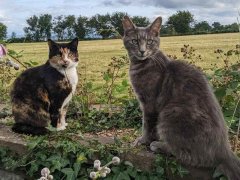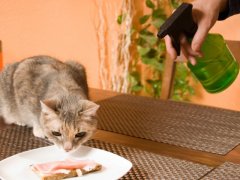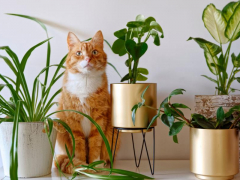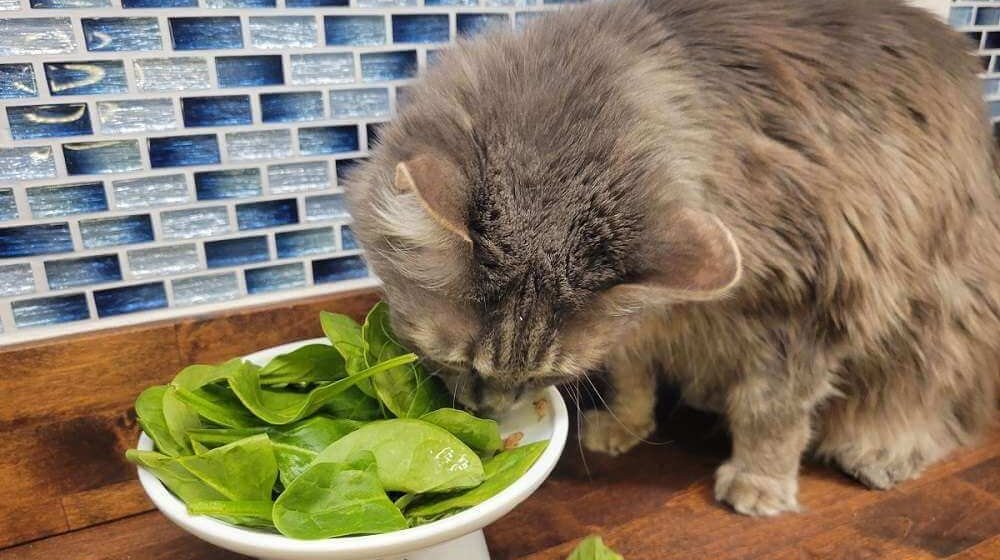
Kate Barrington / Cats.com
Vegan and vegetarian diets can work wonders for human health but think twice before enforcing your dietary preferences on your cat. Protein is a critical component of a balanced feline diet and some types of protein are more valuable for cats than others.
In this guide, we’ll talk about the role protein plays in a feline diet and discuss why protein from animal sources is the most species-appropriate option. We’ll also offer tips for reading cat food labels to help you choose the best possible diet for your cat.
Let’s start with an overview of the nutritional requirements of cats.
Protein Is Just One Piece of the Puzzle
Of the six classes of nutrients—protein, fat, carbohydrates, vitamins, minerals, and water—the body utilizes the first three as energy sources. Depending on their anatomy and physiology, different species rely more heavily on certain nutrients than others.
Cats, for example, rely primarily on protein and fat—they have a very low nutritional requirement for carbohydrates.
In the wild, a cat would get all the amino acids, fatty acids, vitamins, and minerals they need by consuming whole prey. A whole-prey feline diet consists of muscle meat, organs, and bone as well as the stomach contents of the prey, which likely contain small amounts of plant matter.
Some commercial cat foods mimic a whole prey diet more closely than others, depending on the ingredients, but they must meet certain minimum nutritional requirements set by the Association of American Feed Control Officials (AAFCO) to be considered nutritionally complete.
Along with specific levels of key micronutrients, a complete and balanced commercial diet for adult cats contains a minimum of 9% crude fat and 26% crude protein, both measured as dry matter. Cat foods formulated for kittens and pregnant or lactating female cats must contain a minimum of 30% dry matter protein.
Animal Protein vs. Plant Protein
Proteins are made up of chains of amino acids that the body uses to grow and maintain healthy muscles, bones, and skin.
According to Dr. Jo Myers, DVM, a veterinarian at Vetster, “Cats, humans, and other animals have different protein building blocks they can manufacture themselves, while other protein building blocks must come from their diets.”
Cats require 22 different amino acids, ten of which they can synthesize from other chemicals in the body. The remaining 11, called essential amino acids, must come from the cat’s diet. All mammals share the need for nine essential amino acids but cats require two more: taurine and arginine.
The essential amino acids cats need include:
- Taurine
- Arginine
- Histidine
- Isoleucine
- Leucine
- Lysine
- Methionine
- Phenylalanine
- Threonine
- Tryptophan
- Valine
Foods that contain all the essential amino acids an animal needs are referred to as a complete protein source. Many foods contain amino acids but only animal proteins—things like beef, chicken, eggs, and fish—are considered complete proteins for cats. Plant proteins do not contain taurine or arginine, both of which are important for your cat’s health.
If cats don’t get these essential amino acids from their diet, they will become deficient. The type and severity of resulting symptoms will depend on which amino acids they are missing, and by how much, but nutritional deficiencies can lead to severe disease.
But can plant protein still be valuable for cats? Dr. Raymond Spragley, DVM, CVA, CCRT, says, “Plant protein can be beneficial in terms of fulfilling cats’ overall need for protein but cannot fulfill their dietary needs on its own.”
In other words, plant proteins can increase the total protein content of a cat food product. However, as Dr. Spragley comments, for the food to be considered nutritionally complete, it “must be supplemented with animal protein to provide cats with the amino acids and vitamins they need to survive and thrive.”
Let’s delve further into this concept with an example.
The Problem With Plant Protein in Pet Food
Many pet owners don’t look beyond the product name when shopping for cat food. Even the guaranteed analysis on the label doesn’t always tell you the whole story. A diet labeled as a high-protein cat food may be higher in protein than the average product but you’d have to delve a little deeper to find out where that protein comes from.
For example, during a recent trip to the pet store, I picked up a bag of cat food from a brand I didn’t recognize. The product name implied it was a chicken-based formula and I was impressed by the protein content listed in the guaranteed analysis.
Upon browsing the list of ingredients, however, I spotted a problem.
The first ingredient listed was chicken. Great! Brown rice came next. As far as carbohydrates in cat food go, I prefer brown rice over starchier options like tapioca or hard-to-digest peas or other legumes. The problem wasn’t the carbohydrates—it was the plant protein concentrates. Pea protein and potato protein made up ingredients number three and four.
According to Dr. Paola Cuevas, MVZ, a veterinarian and animal behaviorist, “Plant protein concentrates are processed to remove the starchy or carbohydrate portions and extrude the protein portions of plants.” Pet food manufacturers often use them to inflate the total protein content of the product.
More protein in cat food is a good thing. But the benefit of additional protein only goes so far when plant-based proteins overshadow or act as a replacement for more biologically valuable animal proteins.
What it comes down to is this: cats are obligate meat-eaters, so meat-based diets are simply more appropriate for their biology, anatomy, and nutrition than plant-based diets.
Can Cats Survive on a Plant-Based Diet?
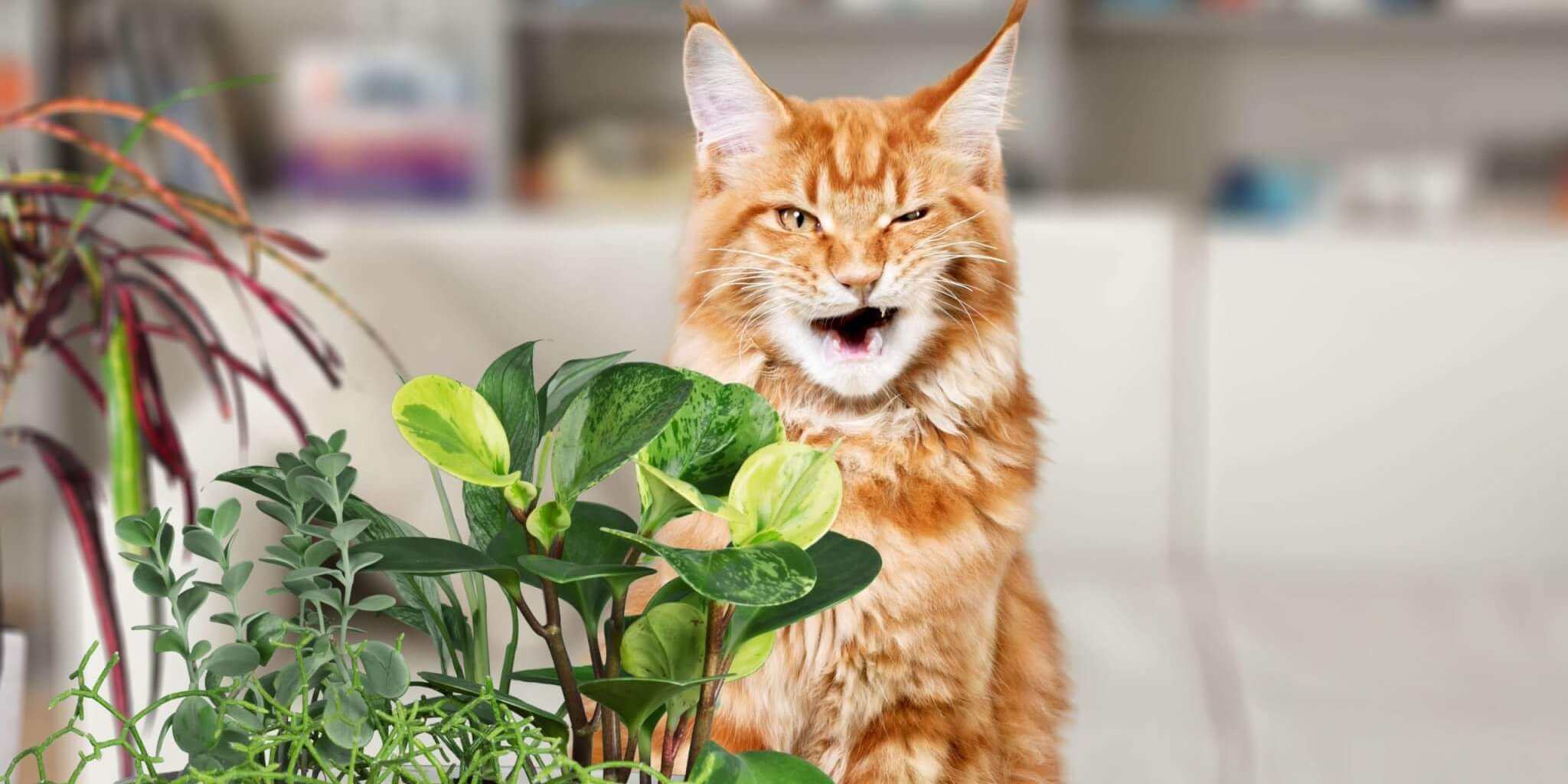
Cats may nibble on grass and catnip—but these are just a garnish on their otherwise carnivorous diet. BillionPhotos / Adobe Stock
By now we’ve established that a diet rich in animal protein is ideal for cats, but can a cat survive on a plant-based diet? Is the vegan diet a viable option for cats? To answer this question, we need to remember that cats are obligate carnivores.
A diet for obligate carnivores, comments Dr. Neus Torrent, DVM, an animal nutritionist for Outdoor Bengal, requires nutrients found only in animal flesh. “While cats might be able to ingest small amounts of plant matter,” he says, “they lack the necessary physiology required to fully digest it.”
Dr. Myers offers an explanation that helps conceptualize the biological difference between herbivores and carnivores.
She describes herbivores as bacteria farmers, explaining that, “The plant materials they ingest are used to feed large populations of bacteria in their digestive tracts, which they subsequently digest and receive nutrients from.”
Both herbivores and omnivores, she notes, have grinding teeth to help break down vegetation before it enters the digestive tract to streamline this process. A quick peek into your cat’s mouth will reveal a key characteristic that identifies them as a carnivore: their sharp teeth.
A cat’s teeth are intended for tearing meat, not grinding plants. More than that, however, a cat’s digestive tract isn’t designed to process plant matter.
“The feline digestive tract is small and doesn’t have multiple stomachs, like cows and sheep,” says Dr. Myers. “In turn, cats cannot farm bacteria… Their intestines aren’t designed to efficiently absorb plant proteins and other nutrients, leaving most plant nutrients unavailable to them.”
Dr. Cuevas notes that manufacturers of plant-based diets for pets try to get around this problem by adding synthetic versions of essential nutrients like vitamin A and niacin and the amino acids taurine, arginine, and lysine. Even so, she says, “Studies have shown that vegan cat diets are deficient in the nutrients a cat needs to thrive when compared to the AAFCO minimum standards.”
To summarize, a cat might be able to survive on a supplemented plant-based diet but it may not thrive. Several of the veterinarians I consulted commented that long-term feeding of plant-based diets can predispose cats to serious health problems like diabetes and cardiomyopathy.
Tips for Interpreting Cat Food Labels
If you want to feed your cat a biologically appropriate diet, do some research first—the product name doesn’t tell the whole story. As Dr. Myers says, “Reading cat food labels isn’t as easy or straightforward as you might think, and it can be difficult to separate fact from fiction.”
Here are a few things to consider when reading a cat food label:
- The guaranteed analysis usually lists nutrients on an “as-fed” basis, which includes the water content. You may need to convert the values to dry matter if you want to make an accurate comparison between products.
- Just because an animal ingredient appears in the product name doesn’t mean it’s the main ingredient. Double-check the list of ingredients and remember they’re arranged in descending order by weight.
- Pet food manufacturers often “split” plant-based ingredients to lower their position on the ingredients list. For example, a chicken and potato cat food might contain 18% chicken and 30% potato. However, by splitting the potato into potato flour, potato starch, and potato protein, the chicken will appear at the top of the list.
- Plant proteins aren’t always listed in the form of a concentrate. Ingredients like corn gluten meal, soybean meal, and peas can add significantly to a cat food’s total protein composition.
With so many cat food products out there, it may seem like an impossible task to sort the good from the bad. A little research goes a long way, however, and recalling your cat’s biology as a carnivore will help you make a healthy decision on your cat’s behalf.
